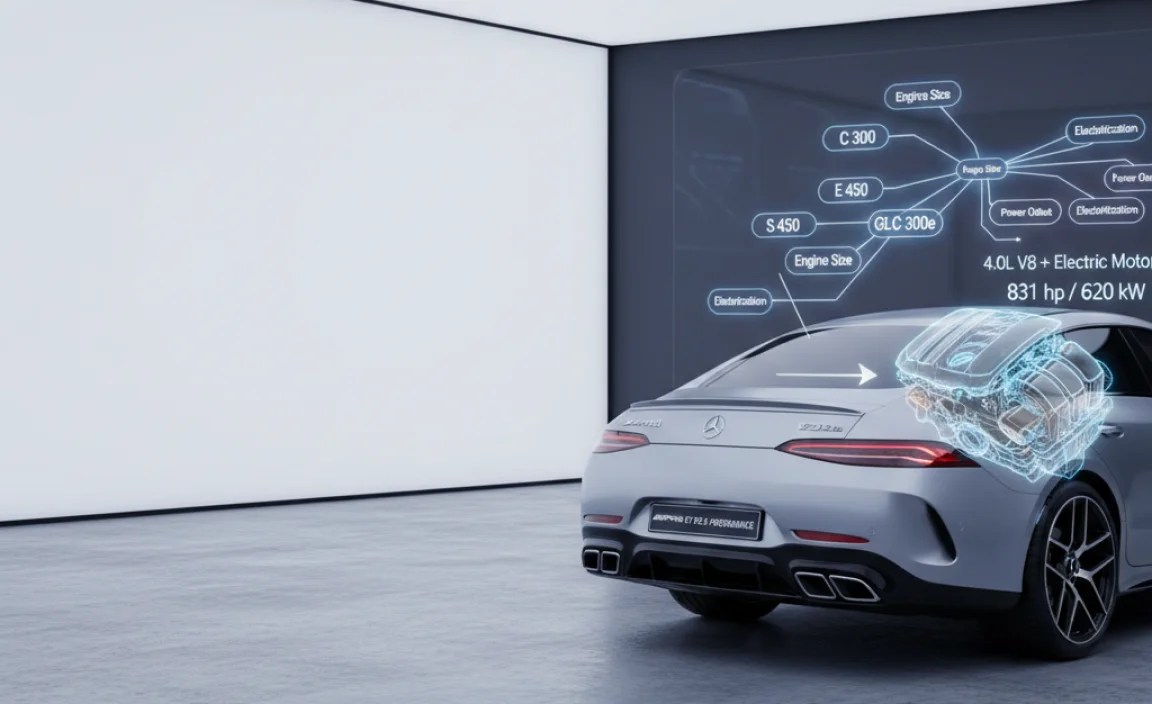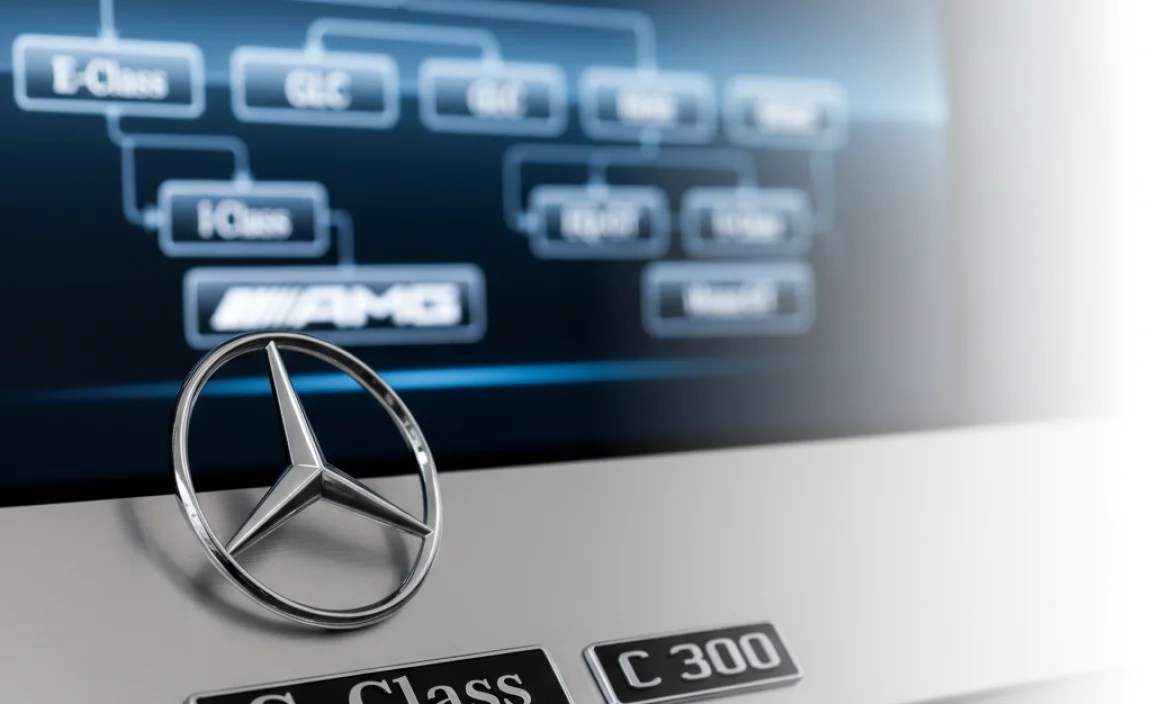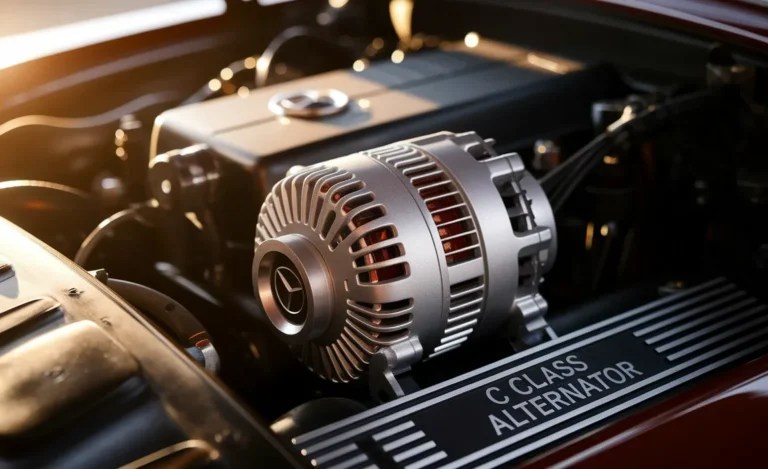Understanding the Mercedes-Benz Model Naming Scheme
Quick Summary: Decoding Mercedes-Benz model names involves understanding a combination of letters and numbers. Letters indicate the vehicle class (e.g., C-Class, E-Class, S-Class), while numbers roughly correlate to engine displacement. Additional letters signify specific features like “d” for diesel, “e” for electric or plug-in hybrid, and “AMG” for high-performance models. This system provides a quick overview of the vehicle’s type and performance level.
Ever feel lost in the alphabet soup of Mercedes-Benz model names? You’re not alone! It can seem like a secret code at first. But don’t worry, it’s actually a pretty logical system once you understand the basics. This guide will break down the Mercedes-Benz naming scheme, so you can easily identify different models and understand what those letters and numbers actually mean. We’ll cover everything from the core classes to engine designations and special edition badges. Ready to decode your dream Mercedes?
The Core Classes: Your Foundation

The first letter (or letters) in a Mercedes-Benz model name signifies the vehicle’s class. Think of it as the foundation of the naming structure. Here’s a breakdown of the most common classes:
- A-Class: Compact hatchback or sedan, offering entry-level luxury.
- B-Class: Compact multi-purpose vehicle (MPV), known for its practicality and space.
- C-Class: Compact executive car, available as a sedan, coupe, or cabriolet. A popular choice for its balance of luxury and performance.
- E-Class: Executive car, offering a comfortable and refined driving experience. Available as a sedan, coupe, cabriolet, or wagon.
- S-Class: Flagship luxury sedan, representing the pinnacle of Mercedes-Benz engineering and innovation.
- G-Class: Iconic off-road SUV, known for its ruggedness and go-anywhere capability.
- GLA: Compact SUV, the entry-level SUV in the Mercedes-Benz lineup.
- GLB: Compact SUV, offering a more spacious interior than the GLA, sometimes with an optional third row.
- GLC: Mid-size SUV, a popular choice for families seeking luxury and practicality. Available as a standard SUV or a coupe SUV.
- GLE: Mid-size SUV, offering a more premium experience than the GLC. Available as a standard SUV or a coupe SUV.
- GLS: Full-size SUV, the largest SUV in the Mercedes-Benz lineup, offering luxurious accommodations for up to seven passengers.
- CLA: Four-door coupe, offering a stylish and sporty alternative to the C-Class sedan.
- CLS: Four-door coupe, positioned between the E-Class and S-Class, known for its elegant design.
- SL: Roadster, a classic two-seater convertible with a focus on performance and luxury.
- SLC/SLK: Compact roadster (SLC is the newer designation for the SLK).
- AMG GT: High-performance sports car, available as a coupe or roadster, engineered by Mercedes-AMG.
- EQ Models: All-electric vehicles (EQA, EQB, EQC, EQE, EQS, EQV).
Decoding the Numbers: Engine Power and Size

The numbers in a Mercedes-Benz model name generally relate to the engine’s power output, although they don’t always directly correspond to the engine’s displacement (size). Historically, the numbers reflected the engine’s displacement in liters (e.g., a “C300” might have had a 3.0-liter engine). However, with advancements in engine technology like turbocharging and electrification, this is no longer a strict rule.
Instead, the numbers now serve as a relative indicator of performance within the model range. A higher number generally signifies more power and higher performance. For example, a C300 will typically have more horsepower than a C200, even if they have the same engine displacement. Similarly, an E450 will generally be more powerful than an E350.
Here’s how to interpret the numbers:
- Lower numbers (e.g., 180, 200, 220): Typically indicate base models with more fuel-efficient engines.
- Mid-range numbers (e.g., 250, 300, 350): Represent a balance of performance and efficiency.
- Higher numbers (e.g., 400, 450, 500): Suggest more powerful engines and enhanced performance.
Additional Letters: Unlocking the Features

Beyond the class and engine designation, additional letters in the model name provide further information about the vehicle’s powertrain, drivetrain, and other key features. Here’s a guide to some of the most common suffixes:
- d: Diesel engine. For example, GLE 350d indicates a GLE-Class SUV with a diesel engine.
- e: Electric or plug-in hybrid. For example, C300e denotes a C-Class with a plug-in hybrid powertrain.
- h: Hybrid.
- 4MATIC: Mercedes-Benz’s all-wheel-drive system. For example, E 350 4MATIC indicates an E-Class with all-wheel drive.
- C: Coupe. Used in some older models.
- T: Station Wagon/Estate. (e.g., C-Class T-Model)
- S: Supercharged (Kompressor). Used in older models.
The AMG Difference: High-Performance Engineering

AMG (Aufrecht Melcher Großaspach) is Mercedes-Benz’s high-performance division. AMG models are significantly enhanced with more powerful engines, sport-tuned suspensions, upgraded brakes, and aggressive styling. AMG vehicles are easily identifiable by the “AMG” prefix or suffix in their model name.
There are two main types of AMG models:
- Mercedes-AMG: These are the top-of-the-line, fully-fledged AMG models. They feature handcrafted engines and extensive performance upgrades. Examples include the AMG C 63, AMG GT, and AMG S 63.
- AMG Line: These models offer a sporty appearance and some performance enhancements but don’t have the full AMG engine. They typically include AMG styling cues, sport seats, and upgraded wheels. An example is a C 300 AMG Line.
AMG models often use a two-digit number following the class designation to indicate their performance level. Higher numbers generally denote more powerful engines and more aggressive tuning. For example, an AMG C 63 is more powerful than an AMG C 43.
EQ: The Electric Future

Mercedes-Benz’s EQ sub-brand represents its all-electric vehicles. EQ models use a similar naming structure to traditional Mercedes-Benz models, with letters indicating the vehicle class and numbers indicating the performance level. The “EQ” prefix clearly identifies these vehicles as electric.
Here are some examples of EQ models:
- EQA: The electric equivalent of the GLA, a compact SUV.
- EQB: The electric equivalent of the GLB, a compact SUV with available third-row seating.
- EQC: A mid-size electric SUV.
- EQE: The electric equivalent of the E-Class sedan.
- EQS: The electric equivalent of the S-Class sedan, representing the pinnacle of electric luxury.
- EQV: An all-electric van.
EQ models may also include additional letters to indicate specific features, such as “4MATIC” for all-wheel drive.
A Deep Dive: Understanding Specific Examples
Let’s look at a few examples to solidify your understanding of the Mercedes-Benz naming scheme:
- C 300: C-Class sedan with a mid-range engine (likely a turbocharged 2.0-liter).
- E 450 4MATIC: E-Class sedan with a more powerful engine and all-wheel drive.
- GLC 300 d: GLC-Class SUV with a mid-range diesel engine.
- AMG C 63 S: High-performance C-Class sedan engineered by AMG, with the “S” indicating an even higher level of performance.
- EQS 580 4MATIC: All-electric S-Class sedan with a high-performance powertrain and all-wheel drive.
Mercedes-Benz Model Code Table
This table summarizes the Mercedes-Benz model naming scheme:
| Component | Description | Examples |
|---|---|---|
| Class | Indicates the vehicle type and size. | A-Class, C-Class, E-Class, S-Class, GLA, GLC, GLE, GLS, CLA, CLS, SL, AMG GT, EQ Models |
| Engine Designation | Represents the engine’s relative power output. | 180, 200, 300, 450, 580, 63 |
| Engine Type | Indicates the engine type (diesel, electric, hybrid). | d (Diesel), e (Electric/Plug-in Hybrid), h (Hybrid) |
| Drivetrain | Indicates the drivetrain (all-wheel drive). | 4MATIC (All-Wheel Drive) |
| AMG | Denotes a high-performance model engineered by AMG. | AMG C 63, AMG GT |
| EQ | Denotes an all-electric model. | EQA, EQB, EQC, EQE, EQS |
Historical Context and Evolution
The Mercedes-Benz naming scheme has evolved over time. In the past, the numbers in the model name more directly correlated to the engine’s displacement. However, as engine technology has advanced, Mercedes-Benz has shifted to a more relative system that reflects the engine’s power output.
For example, older Mercedes-Benz models like the 300E had a 3.0-liter engine. Today, a model with “300” in its name might have a smaller, turbocharged engine that produces similar or even greater power. This shift reflects the industry-wide trend toward smaller, more efficient engines that deliver high performance.
Understanding this historical context can be helpful when comparing older and newer Mercedes-Benz models. While the basic structure of the naming scheme has remained consistent, the meaning of the numbers has evolved.
Tips for Remembering the Naming Scheme
Here are a few tips to help you remember the Mercedes-Benz naming scheme:
- Focus on the class first: Knowing the class (A, C, E, S, etc.) provides a fundamental understanding of the vehicle’s type and size.
- Use the numbers as a relative guide: The numbers indicate the engine’s relative power output within the model range.
- Pay attention to the suffixes: The suffixes (d, e, 4MATIC, etc.) provide valuable information about the vehicle’s powertrain and drivetrain.
- Remember the AMG and EQ distinctions: AMG models are high-performance versions, while EQ models are all-electric.
Why Does This Naming Convention Matter?
Understanding the Mercedes-Benz naming convention matters for several reasons:
- Informed purchasing decisions: It helps you compare different models and trims, ensuring you choose the right vehicle for your needs and budget.
- Easier vehicle maintenance: Knowing your vehicle’s model and engine type makes it easier to find the correct parts and service information.
- Improved communication with mechanics: You can accurately describe your vehicle to mechanics, leading to more efficient and effective repairs.
- Greater appreciation for Mercedes-Benz engineering: Understanding the naming scheme provides a deeper appreciation for the engineering and technology that goes into each Mercedes-Benz vehicle.
Common Mistakes to Avoid

Here are a few common mistakes to avoid when interpreting Mercedes-Benz model names:
- Assuming the numbers directly correlate to engine displacement: As mentioned earlier, this is no longer a strict rule. The numbers now represent the engine’s relative power output.
- Ignoring the suffixes: The suffixes provide important information about the vehicle’s powertrain and drivetrain.
- Confusing AMG Line with full AMG models: AMG Line models offer sporty styling and some performance enhancements, but they don’t have the full AMG engine.
- Overlooking the EQ designation: The EQ designation clearly identifies all-electric models.
External Resources
For more information about Mercedes-Benz models and specifications, you can consult these resources:
- Mercedes-Benz USA Official Website: https://www.mbusa.com/en/home
- Edmunds: https://www.edmunds.com/
- Kelley Blue Book (KBB): https://www.kbb.com/
FAQ: Decoding Mercedes-Benz Model Names
Q: What does the “C” in C-Class stand for?
A: The “C” in C-Class stands for “Compact,” indicating that it’s a compact executive car in the Mercedes-Benz lineup.
Q: Do the numbers in a Mercedes model name always indicate engine size?
A: Not anymore. While they used to represent engine displacement, they now indicate relative engine power within the model range.
Q: What does “4MATIC” mean?
A: “4MATIC” is Mercedes-Benz’s all-wheel-drive system, providing enhanced traction and stability.
Q: What is the difference between AMG and AMG Line?
A: AMG models are high-performance versions with handcrafted engines, while AMG Line models offer sporty styling and some performance enhancements but not the full AMG engine.
Q: What does the “e” signify in a model name like C300e?
A: The “e” indicates that the vehicle is either an electric or a plug-in hybrid model.
Q: How can I tell if a Mercedes is all-electric?
A: All-electric Mercedes-Benz models are designated with the “EQ” prefix, such as EQA, EQB, EQC, EQE, and EQS.
Q: Where can I find the exact specifications of my Mercedes-Benz model?
A: You can find detailed specifications in your owner’s manual, on the Mercedes-Benz USA website, or by using your VIN (Vehicle Identification Number) on a VIN decoder website.
Conclusion
Understanding the Mercedes-Benz model naming scheme might seem daunting at first, but it’s a valuable skill for any Mercedes-Benz owner or enthusiast. By decoding the letters and numbers, you can quickly identify different models, understand their features, and make informed decisions when buying, maintaining, or discussing your vehicle. So, the next time you see a Mercedes-Benz model name, you’ll be able to decipher its meaning and appreciate the engineering and innovation behind it. Now you’re equipped to confidently navigate the world of Mercedes-Benz






